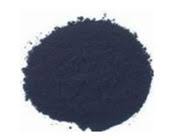famous fabric dye indigo
The Rich Heritage of Indigo Dyeing
Indigo, one of the oldest textile dyes in the world, has a rich history and cultural significance that spans thousands of years. Known for its deep blue color, indigo dye is derived from the leaves of the indigo plant, particularly the Indigofera species. This natural dyeing process has been practiced in various cultures around the globe, making it a fascinating subject of study for historians, artists, and fashion enthusiasts alike.
The history of indigo dye dates back to ancient civilizations. Evidence suggests that indigo was used as early as 2500 BC in the Indus Valley Civilization, where the inhabitants utilized the plant to dye their textiles. The ancient Egyptians also employed indigo dye to color their garments, creating a striking contrast with the bright white linen they favored. As trade routes expanded, the knowledge of indigo dyeing spread across continents, reaching Europe, Africa, and the Americas.
The Rich Heritage of Indigo Dyeing
In West Africa, indigo dyeing is an integral part of the culture and tradition. The Yoruba people, for example, have perfected the art of adire, a resist-dyeing technique that produces intricate patterns on fabric. This traditional method not only showcases the versatility of indigo but also serves as a medium for storytelling, as each design conveys a specific message or cultural significance. The revival of indigo dyeing in many African communities has sparked a renewed interest in traditional crafts and ecological practices.
famous fabric dye indigo

In Japan, indigo dyeing is celebrated through a craft known as shibori, a tie-dyeing technique that creates stunning patterns by folding, twisting, and binding the fabric before dyeing it in indigo. The Japanese have revered indigo for centuries, associating it with purity, protection, and tranquility. Today, Japanese indigo textiles are highly sought after for their artistic value and craftsmanship.
Indigo's resurgence in the fashion industry is noteworthy in recent years. As consumers become more environmentally conscious, the demand for natural dyes, including indigo, is on the rise. Many fashion designers and brands have begun to incorporate indigo dye not only for its aesthetic appeal but also for its sustainability. Natural indigo, being biodegradable and free from harmful chemicals, stands out as a safer alternative to synthetic dyes.
Moreover, the global fashion landscape has seen a trend toward artisanal and handmade garments, with indigo-dyed textiles often at the forefront. From denim jeans to traditional garments like kimono and shalwar kameez, indigo continues to be a beloved choice for its timeless sophistication and versatility.
In conclusion, indigo dyeing embodies a beautiful blend of history, culture, and art. Its journey from ancient civilizations to modern fashion illustrates the dye's enduring appeal and significance in various cultural contexts. As we strive for sustainability in our choices, indigo reminds us of the richness of our shared past while inspiring new creative expressions in the present. Whether as a celebrated art form or a sustainable fashion choice, indigo will undoubtedly continue to leave its mark on the world for years to come.
-
The Timeless Art of Denim Indigo Dye
NewsJul.01,2025
-
The Rise of Sulfur Dyed Denim
NewsJul.01,2025
-
The Rich Revival of the Best Indigo Dye
NewsJul.01,2025
-
The Enduring Strength of Sulphur Black
NewsJul.01,2025
-
The Ancient Art of Chinese Indigo Dye
NewsJul.01,2025
-
Industry Power of Indigo
NewsJul.01,2025
-
Black Sulfur is Leading the Next Wave
NewsJul.01,2025

Sulphur Black
1.Name: sulphur black; Sulfur Black; Sulphur Black 1;
2.Structure formula:
3.Molecule formula: C6H4N2O5
4.CAS No.: 1326-82-5
5.HS code: 32041911
6.Product specification:Appearance:black phosphorus flakes; black liquid

Bromo Indigo; Vat Bromo-Indigo; C.I.Vat Blue 5
1.Name: Bromo indigo; Vat bromo-indigo; C.I.Vat blue 5;
2.Structure formula:
3.Molecule formula: C16H6Br4N2O2
4.CAS No.: 2475-31-2
5.HS code: 3204151000 6.Major usage and instruction: Be mainly used to dye cotton fabrics.

Indigo Blue Vat Blue
1.Name: indigo blue,vat blue 1,
2.Structure formula:
3.Molecule formula: C16H10N2O2
4.. CAS No.: 482-89-3
5.Molecule weight: 262.62
6.HS code: 3204151000
7.Major usage and instruction: Be mainly used to dye cotton fabrics.

